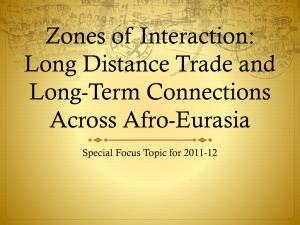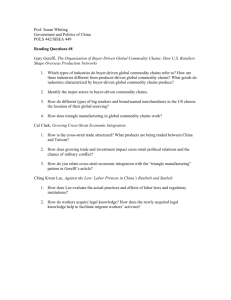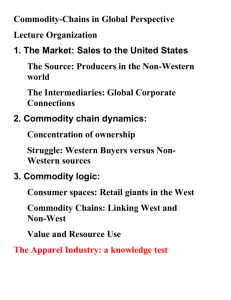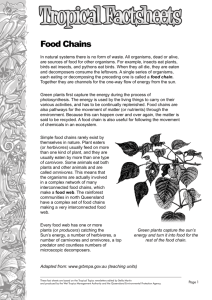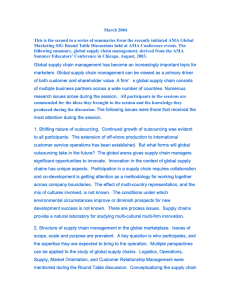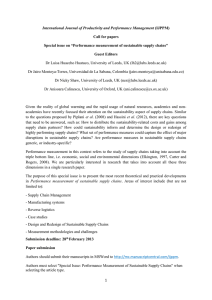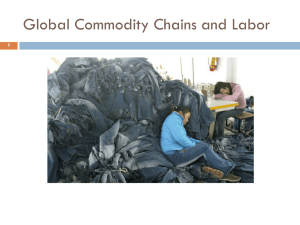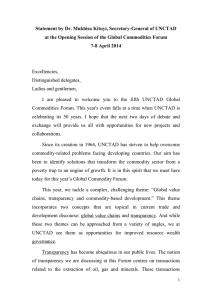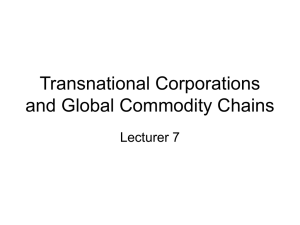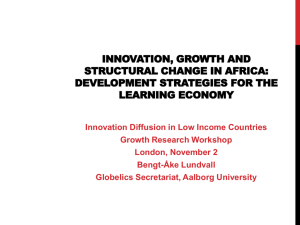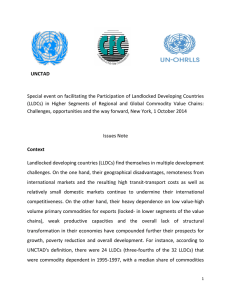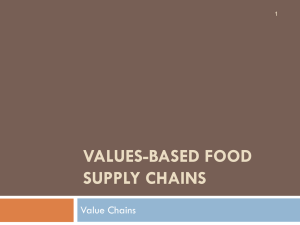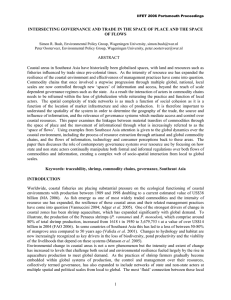GEOG 240: Day 16
advertisement
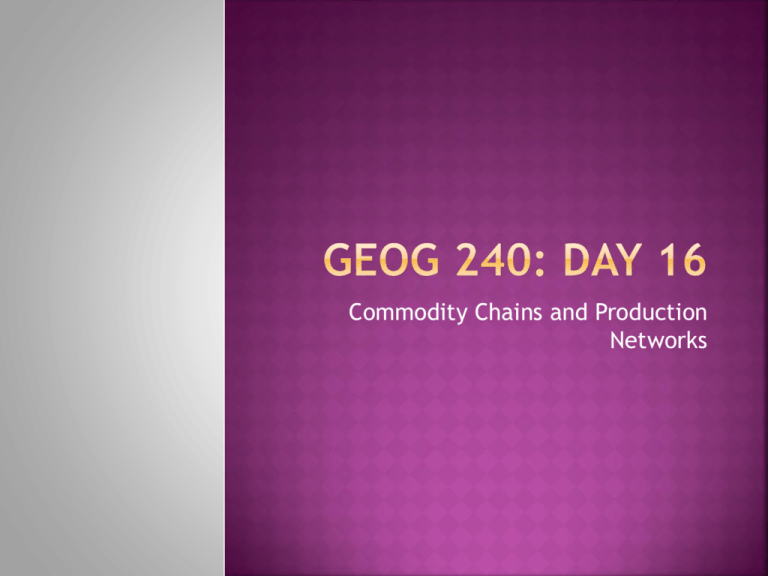
Commodity Chains and Production Networks A final reminder about “Green Fire” tonight and the Urban Issues Film Festival on Friday. It’s interesting that, despite super-storm Sandy, climate change never become an issue in the U.S. election. It’s the old ‘elephant in the room’ syndrome. Today we’ll cover Chapter 10, and watch “Poor No More” about the ‘Swedish model.’ Any questions about the case studies? As a result of economic globalization, places have become more porous than ever – in the conception of Doreen Massey, not things but mere intersections of global flows. This is not new. Even what many people regard as the distinctive heritage ‘Craftsman’ houses of Vancouver from a century ago were imported in patternbooks from California, which in turn were inspired by the Arts and Crafts movement in late 19th century England. It is sometimes hard to know – especially in newer places – what is unique and authentic anymore. “The production and consumption of particular goods and services or commodities typically involves a complex chain of actors, spread across different countries and regions.” They cite the example from David Harvey describing his breakfast and how it was sourced from all parts of the world. Of course, when we buy such products, money makes them largely faceless and anonymous. Thus, Marx described money as the universal “pimp” connecting people and commodities – whereas commodities are actually “a bundle of social relations.” Two approaches: global commodity chain (GCC) approach, and global production networks (GPN) approach. [See comparison table on p. 224.] “Flows of different kinds of material – goods, services, money, information and people – are of particular importance, creating a range of connections between places.” Commodity chains – both producer-driven and buyerdriven – “involve the transformation of material and non-material (procurement, insurance, legal services, advertising, and marketing) inputs.” Four stages: inputs, transformation, distribution, and consumption. Figure 10.1 illustrates a generic production network. One difference with buyer-directed networks is that they are dominated by huge retail chains who outsource production of goods (in the case of Walmart to China). Producer chains would include Nike, Adidas, Gap, and Ikea. See Box 10.1 about the battle over tariffs and taxes between Europe that favoured former colonies and small producers and the U.S. that favoured multinational-controlled plantations in Latin America and Africa. Another factor that has influenced buyercontrolled networks are the growing concern with ethical consumption, as manifested in fair and direct trade, and organic, products. In producer-driven commodity chains, personal computers are perfect examples. See Figures 10.2 and 10.3 (pp. 227-228) for examples from the laptop and Dell production systems, where Dell does the design and marketing and contracts out the production of the components. Examples for Dell of chains and networks include: Japan, Korea, China, Taiwan, Malaysia, Singapore, Czech Republic, Hungary, Ireland, Brazil, and the U.S. The Global Production Network approach is based on the concepts of value, power, and territorial embeddedness. Value is created through labour, inter-firm relationships, and technical innovation. Power takes the form of lead forms’ “control of key resources, information, knowledge, skills, and brands within a production network”; institutional power exercised by… …various levels of government, supra-national agencies, and international credit rating agencies, and embeddness in institutional and regulatory contexts and in particular locations because of historical and economic factors. [For different categories and models of embeddedness, see Figure 10.5.] With foreign direct investors, some countries have more bargaining chips than others. In exchange for making its potentially huge consumer market for automobiles available, the Chinese have insisted on joint ventures and technology transfer. They can do this because China is now the third largest auto market in the world after the U.S. and Japan. Some critics have suggested that GPN theory needs to incorporate ecology (resources, and wastes and pollution) and labour as an active force more explicitly, along with the impact of NGOs and social movements in influencing production and consumption patterns. These authors also focus on the interaction between the global and regional levels – networks are embedded in territories and territories are embedded in networks. Territorial coalitions of unlikely bedfellows often collaborate to attract international investment by taking advantage of and enhancing existing assets. Can you think of examples? As the authors note, “The task for regions is to create of supporting conditions for growth by regional institutions through training and educational programmes….knowledge and technology transfer, industrial upgrading, the provision of more advanced infrastructure, and the development of specialized skills” (p. 238). [See Box 10.6 for a description of how the Scottish government fostered the emergence of the “Silicon Glen.”] Nonetheless, they are at pains to emphasize that the relationships between MNCs and regions are very often not equal; thus the latter have to be careful not to be taken advantage of.
